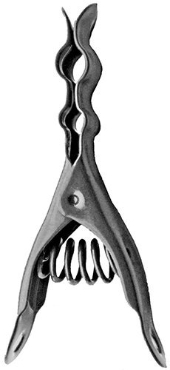
 6
6











 1
1




A toggle bolt, also known as a butterfly anchor, is a fastener for hanging objects on hollow walls such as drywall. Toggle bolts have wings that open inside a hollow wall, bracing against it to hold the fastener securely.
Invasive plants are Earth's way of insisting we notice her medicines. Stephen Herrod Buhner
Everyone learns what works by learning what doesn't work. Stephen Herrod Buhner
 8
8





John Daley Bendigo, Australia The Enemy of progress is the hope of a perfect plan
Benefits of rainfall collection https://permies.com/t/88043/benefits-rainfall-collection
GOOD DEBT/ BAD DEBT https://permies.com/t/179218/mortgages-good-debt-bad-debt
 7
7











 9
9




Visit Redhawk's soil series: https://permies.com/wiki/redhawk-soil
How permies.com works: https://permies.com/wiki/34193/permies-works-links-threads
 10
10




 10
10




A quick tip for cabinets is to install a ~1" high bar at the front of the cabinet. This is high enough to stop a stack of dishes from pushing the door open in medium earthquakes. I wouldn't promise any mileage in a really severe earthquake!Thom Bri wrote: Cabinets tend to dump all your dishes. Keep dishes not frequently used in low cabinets close to the floor.
Visit Redhawk's soil series: https://permies.com/wiki/redhawk-soil
How permies.com works: https://permies.com/wiki/34193/permies-works-links-threads
 8
8




 11
11




Best luck: satisfaction
Greatest curse, greed
 9
9




Nails are sold by the pound, that makes sense.
Soluna Garden Farm -- Flower CSA -- plants, and cut flowers at our farm.
 7
7




Thekla McDaniels wrote: I realize this is a thread for sharing best possible strategies and ideas. I just wanted to tell a few of my earthquake stories.
Visit Redhawk's soil series: https://permies.com/wiki/redhawk-soil
How permies.com works: https://permies.com/wiki/34193/permies-works-links-threads
 4
4




Kenneth Elwell wrote:...
There is also Velcro. Both the hook-and-loop type, but also a heavy-duty knobby-bristle type (both sides are the same).
The latter is used for sign mounting, and while theoretically it is demountable, it is likely to come down to the weakest of wall surface, adhesive (and proper prep.), and hung object.
The standard hook and loop can also hold quite a lot (surface area = capacity). Another use would be the small squares/circles for the lower corners of a hanging frame, to prevent swinging side-side or on/off the wall.
Projects, plans, resources - now on the Permies.com digital marketplace.
Try the Everything Combo as a reference guide.
 4
4




It's never too late to start! I retired to homestead on the slopes of Mauna Loa, an active volcano. I relate snippets of my endeavor on my blog : www.kaufarmer.blogspot.com
 5
5





 5
5




Erica Wisner wrote:
At workplaces where we seismic-prepped our spaces, we used Velcro for any larger or fragile display items on upper shelves.
The shelves/cabinets got securely mounted to the wall (securing boards or corner posts to studs, not just drywall - we used cable and anchored screws at another place to secure steel shelving against earthquakes and "climberquakes," as people are monkeys and you can bet somebody is going to try to climb a shelf to get things up high, whether they are designed for it or not).
The Velcro goes on the base of decorative items, and on the shelf where they go. Secures them well enough for most purposes.
My California relations organize kitchen shelves so heavy and/or breakable stuff is down low. Upper shelves can display lightweight things like baskets, flowers, artwork such as oil paintings or watercolors without glass frames.
Nails are sold by the pound, that makes sense.
Soluna Garden Farm -- Flower CSA -- plants, and cut flowers at our farm.
 7
7




Best luck: satisfaction
Greatest curse, greed
 5
5




Kenneth Elwell wrote:There is also a product known as Museum Putty, it comes in clear and opaque versions. A less aggressive/intrusive (visual and residue) option than Velcro. More conducive to rearranging your stuff as it is removable and reusable, because while some things are in one spot for literally decades, there are others that get used now and then, or change seasonally.
One brand of it being is marketed as "QuakeHOLD!", here's their description:
About This Product
Removable, reusable and non-toxic, the QuakeHOLD! Putty secures antiques, collectibles and more from falling and breaking. Pull off amount needed, roll it in your fingers until soft, and apply to the base of the object. Removing the putty is easy, just lift and twist the object as for the putty will not leave any marks or residue on surfaces.
Highlights
Secures up to 30 items, including collectibles and household breakables
Non-drying, non-toxic and non-damaging
Works on almost all surfaces and leaves no marks
Removable and reusable, use it as many times as you'd like
Cream-colored putty, mold it into any shape you want
 6
6




r ranson wrote:Mother earth has been reminding us we live on a fault line and are overdue for a big one.
That got me thinking about paintings and antique mirrors. On one hand, I like them and don't want them to break. But more importantly, broken glass is a pain in the foot to deal with during an emergency. So I really don't want them to break.
I looked at some very expensive earthquake proof hangers, but I have my doubts. Do they work or perhaps there is a better diy option?
How do I keep heavy paintings and mirrors safe so they don't fall down during an earthquake?
 4
4





|
Time is the best teacher, but unfortunately, it kills all of its students - Robin Williams. tiny ad:
Learn Permaculture through a little hard work
https://wheaton-labs.com/bootcamp
|




